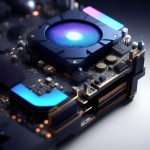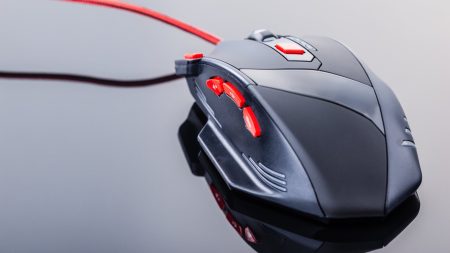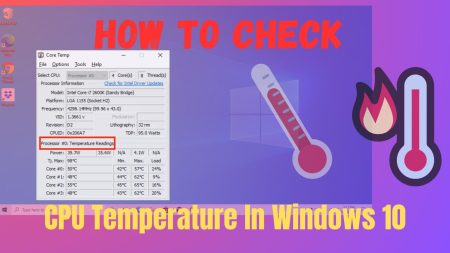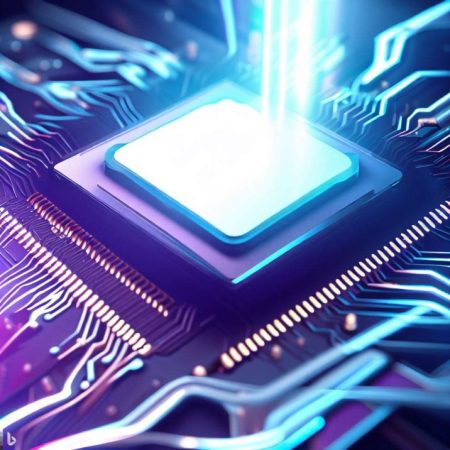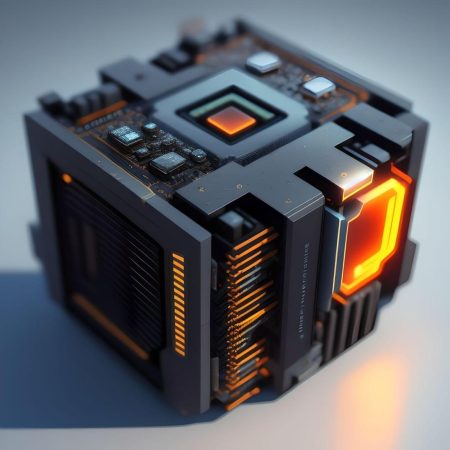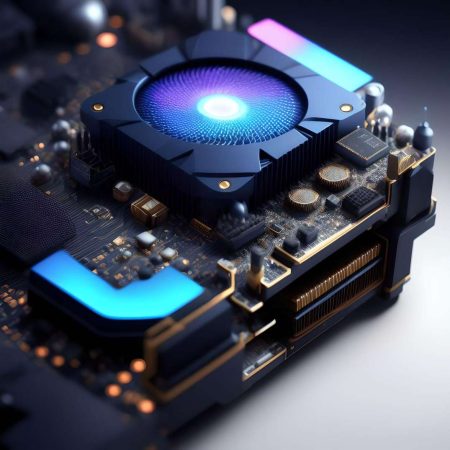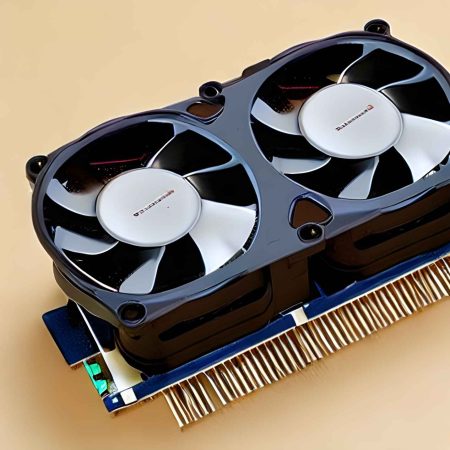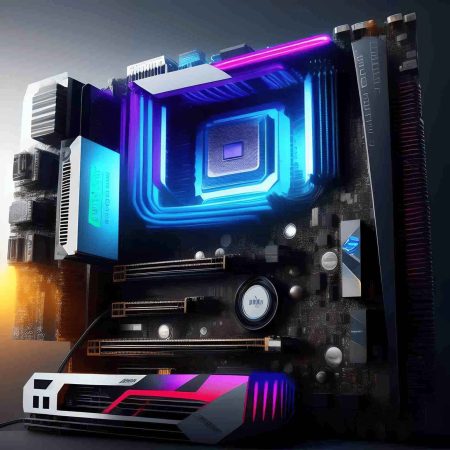As technology progresses, you come across countless updates in software/applications. You can’t outrun those updates even if you want to. This often happens in Windows 10 and 11 operating systems, updating the entire system without your consent.
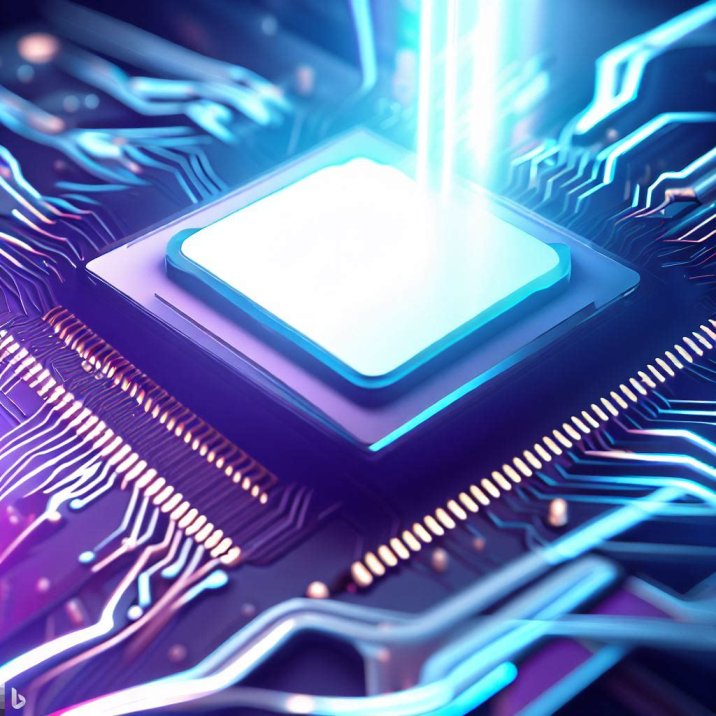
Suddenly, after the new update, your PC starts behaving differently. With some minor adjustments in the settings, you can boost the CPU performance. Some of you may be aware of these settings, but many can learn something new in this article.
In this learning guide, we have practically found some of the techniques that can boost your CPU performance. We’ll discuss the top 10 ways on how to boost CPU performance with a few adjustments and hardware updates.
Table of Contents
Causes of Poor CPU Performance?
Before jumping to the solution, you must know the reasons that cause the CPU to perform poorly. One of the major reasons for a significant drop in CPU performance is dust particles stuck on the heat sink, leading to the freeze of its functionality. The CPU heat sink is the only thing that is responsible for absorbing the heat from the CPU.
If you feel like your PC is performing differently in an unusual manner, look for the settled dust on the heat sink and blow it off. A few other things can also cause a dip in CPU performance, including;
- Low RAM & ROM
- Faulty CPU Coolers
- Corrupt Software/applications
- Malware/Viruses
- Outdated system drivers.
10 Tips on How to Boost CPU Performance:
There can be a lot of reasons for low CPU usage. You have to be more specific while finding the right solution; otherwise, you can damage or corrupt the whole system. Remember, you are not an expert in dealing with hardware issues. To avoid all the possibilities of damaging the CPU or board, must follow the below tips that you are capable of.
1. Move to Upgraded Processor
If there’s a significant difference between the CPU performance that wasn’t before, you should move to a newer upgrade processor. It’s a straightforward thing to do if you don’t want to get stuck in the middle of complexities.
There might be a possibility that you are using an old device and running intensive applications. So, upgrading the new device or powerful latest CPU will help you improve the performance of your CPU. A good CPU will severely impact your professional work and gaming performance. Moving to an upgraded and faster processor may cost a bit, but it can increase the CPU performance to some next level.
2. Activate High-Performance Mode
If you want to stick with the older CPU, activating the High-Performance Mode can increase the processor performance. Sometimes, the CPU controls the background processes related to graphics, etc. This usually happens in computers that do not support the dedicated GPUs. That’s why the CPU takes the responsibility to handle the background processes.
Turning off those processes will increase the system’s performance. In “Performance Option,” you can easily adjust the CPU performance.
Here’s how to activate the High-Performance Mode in Windows 10 & 11:
- Click on the Start button or press the Windows + I key to open the Setting Menu directly.
- Click on the Start button or press the Windows + I key to open the Setting Menu directly.
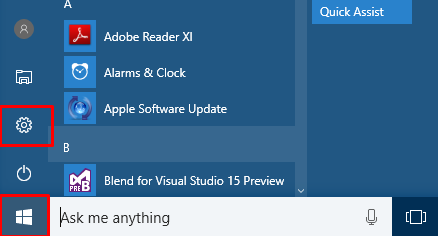
- Now, click the “System” image, and further settings will appear in the new Window.
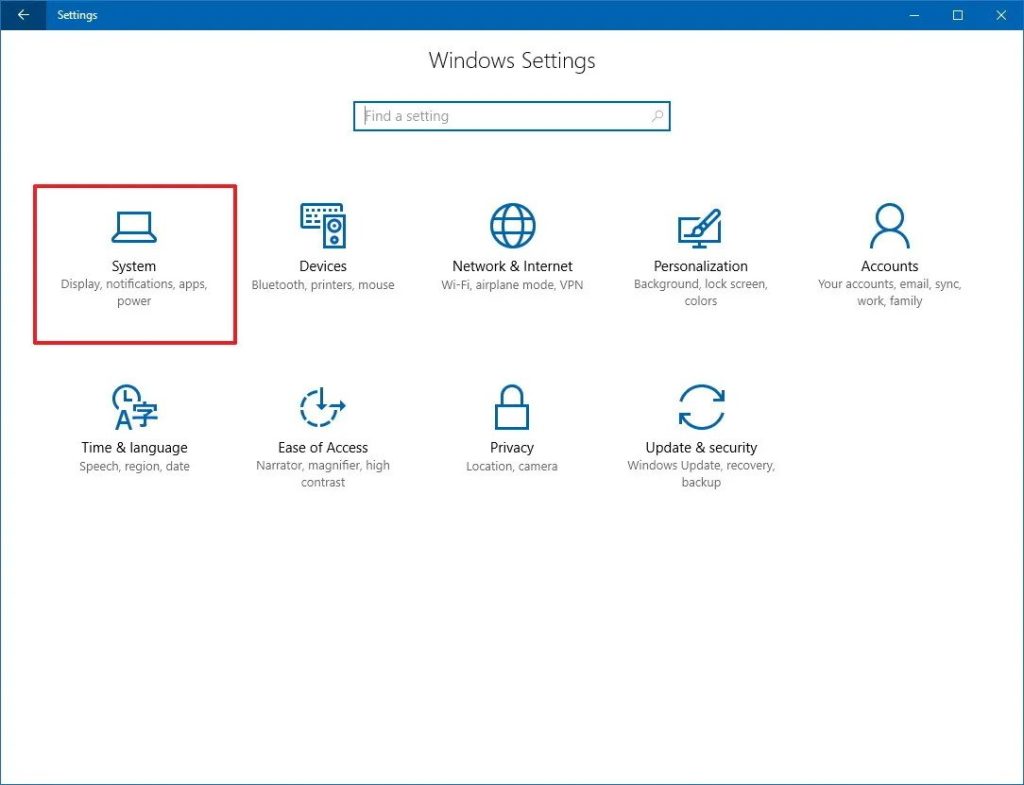
- At the bottom of the navigation bar, click on the “About” option to lead you to the System’s About, where you can see your system’s specifications.
- At the bottom of the About window, locate the “Advanced system settings” and click on it.
- In the System Properties window, hit the “Advanced” tab, and select “Settings” under the Performance box.
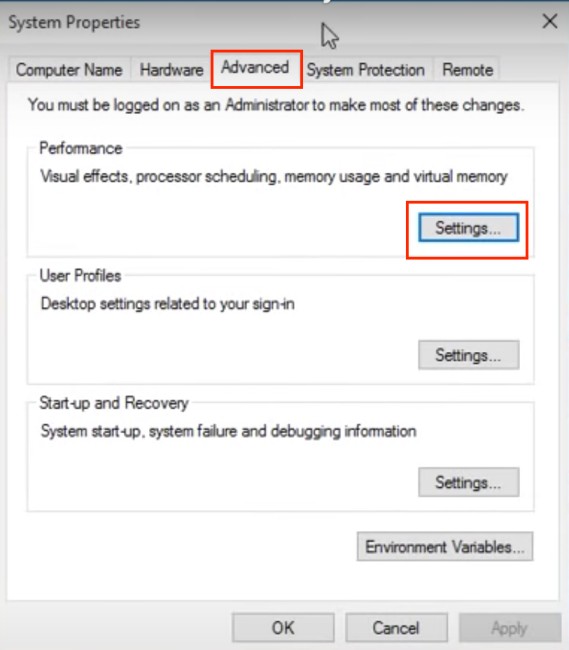
- In the Performance Options window, hit the “Visual Effect” tab and select the “Adjust for best performance” option. Plus, you can enable or disable other options you like.
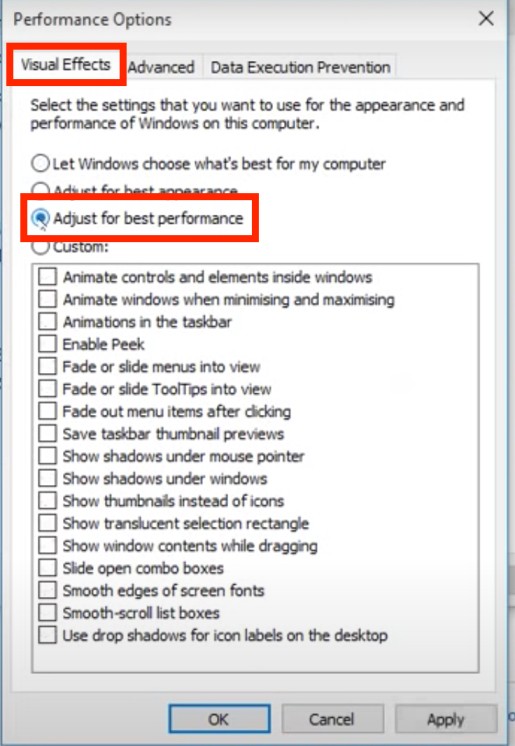
- Hit Apply, then OK to activate the High-Performance mode.
3. Optimize the Power Management System
You can also boost the system’s performance by optimizing the power management system. In case you are wondering how to boost the CPU performance by optimizing the system. Well, if your CPU state is 100%, it uses all of its resources, leading to more power consumption and decreasing the system’s performance. If you change its state to 99%, you quickly boost the CPU performance.
Note: This only works for Intel Chipsets.
Here’s how to optimize the Power Management System:
- Press the Window key, then type Run, and hit enter. Or you can simply press and hold the Windows + R key to open Run.
- In Run search bar, type powercfg.cpl and hit enter to open the Power Options Window.
- Click on the “Change plan setting” and then click on “Changed advanced power settings.”
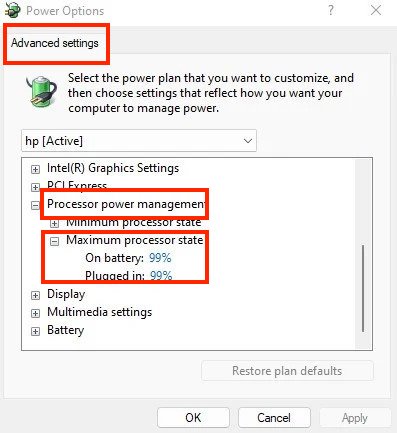
- In Advanced settings, widen “Processor power management” and then do the same for “Maximum power state.”
- There, you’ll have two options, i.e., On Battery and Plugged in. Set both at 99%. That’s it.
4. Update the System Drivers
Sometimes, the new updates trigger the CPU to consume low usage. The reason is that the old and outdated system drivers cause conflicts between programs and interrupt the CPU repeatedly. You need to update your system’s drivers to the latest to stop these types of disputes. It’s also a good practice to update your PC to the latest versions.
5. Delete the Unwanted Programs
The more applications you install, the more your PC processor gets busy using the resources. The more resources the CPU operates, the more your PC gets heavy and sometimes starts to lag. You choose two options to boost the CPU performance: upgrade your processor to the latest that can handle the load of your applications or uninstall those programs and applications you don’t use regularly.
6. Eliminate Background Applications
Low CPU performance can be a result of applications running in the background processes. CPU operates mysteriously, and you don’t know what it’s doing in the background. Some applications would run in the background, even after you close them. If you ever feel something different with PC performance, make sure to check the task manager to see whether some applications are running behind. If it is, close them.
Here’s how to eliminate background applications:
- Press and hold the Ctrl + Shift + Del and select “Task Manager” or Ctrl + Shift + Esc keys altogether to open the task manager.
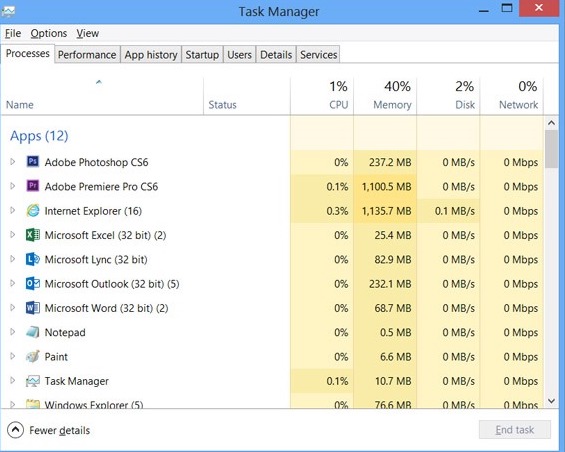
- In Task Manager, you’ll see a list of applications running in the background. Click any of the background processes, and hit the “End Task” button.
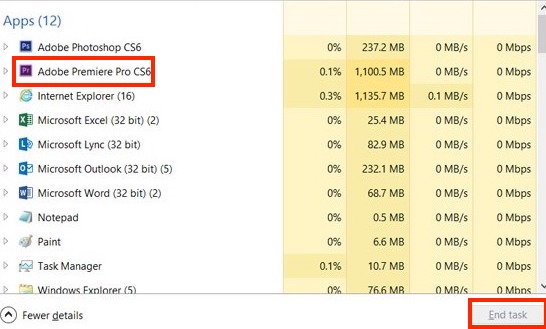
- You can also disable the start-up applications. To do so, click on the “Startup” tab, right-click on the process that shows “High” in the Start-up Impact column, and disable it.
7. Clean up the Hard Disk
A fully loaded hard disk drive can also be a reason your CPU performs slow. Don’t overuse your local storage with unnecessary files and folders. If you want to maintain your CPU performance and keep all existing files and folders, follow the next step.
8. Upgrade to SDD
Solid State Drives work much faster, are more expensive than hard drives, and store more data than HDD. Switching from a hard drive can dramatically boost your system’s CPU performance and overall condition.
9. Change Thermal Paste
You’ve checked and done everything, but still, the system performance isn’t getting any better. In this case, the thermal paste on the CPU had dried up, causing it to produce more heat than usual. When the CPU produces more heat than average, it lowers the performance or sometimes shuts down the system automatically to prevent any further damage to the motherboard. Don’t try to check it by yourself unless you’re an expert. Take it to the technical person, who will review and put the thermal paste on the CPU.
10. Upgrade Your RAM
Random access memory (RAM) is the one that works closely with the CPU. It keeps the data in range for the CPU to perform operations quickly. Increasing the RAM size can have a significant impact on the CPU performance.
Conclusion:
Undoubtedly, boosting the CPU performance can enhance the overall experience of using your PC. If you’re a gamer or PC enthusiast dealing with slow CPU performance, the above tips can greatly help if you follow them. There’s a chance that the tips mentioned below don’t apply to your scenario or condition. Apart from technical issues, malware and viruses can play a negative role in the overall bad performance of your PC.




